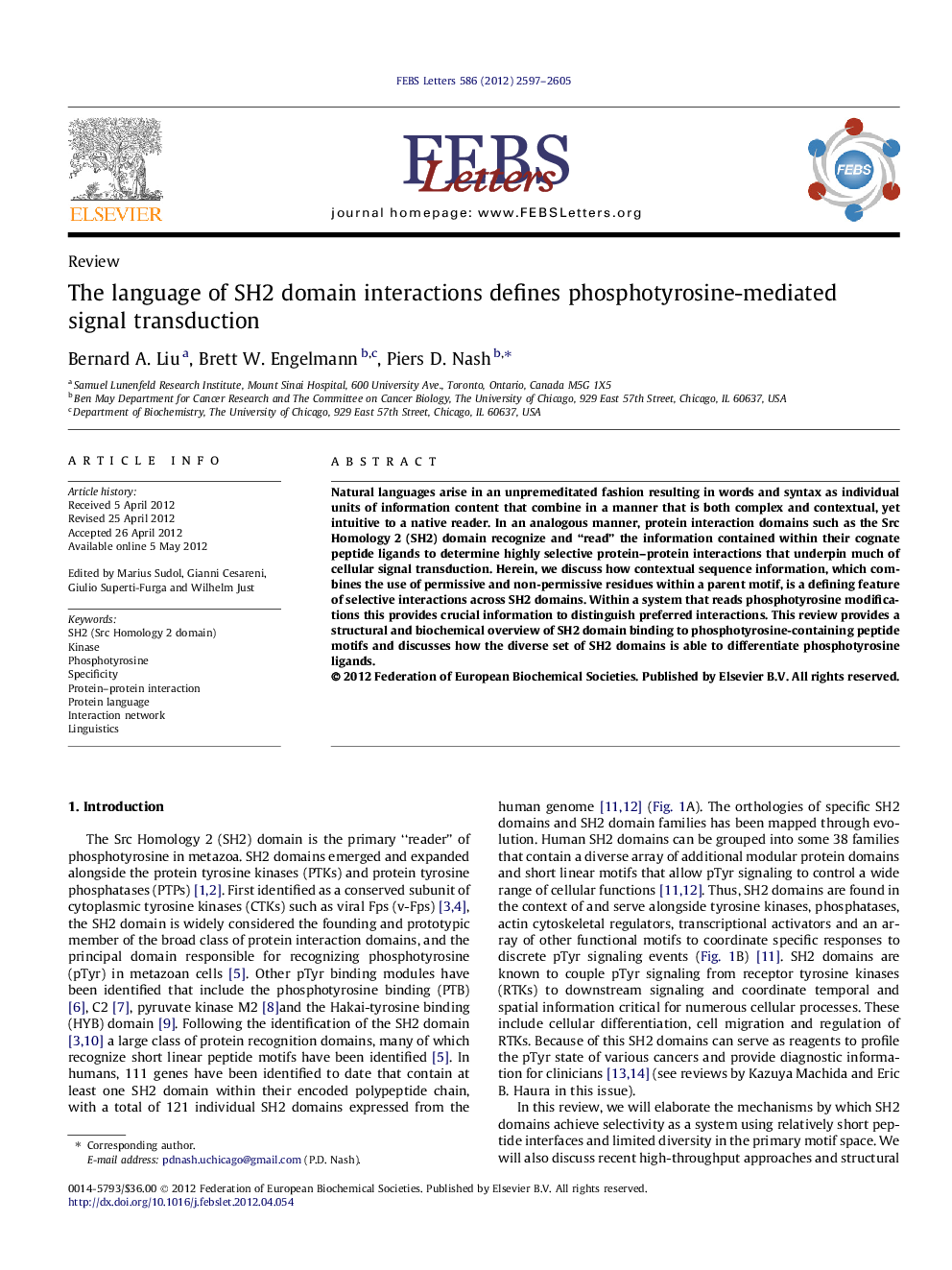| Article ID | Journal | Published Year | Pages | File Type |
|---|---|---|---|---|
| 10871640 | FEBS Letters | 2012 | 9 Pages |
Abstract
Natural languages arise in an unpremeditated fashion resulting in words and syntax as individual units of information content that combine in a manner that is both complex and contextual, yet intuitive to a native reader. In an analogous manner, protein interaction domains such as the Src Homology 2 (SH2) domain recognize and “read” the information contained within their cognate peptide ligands to determine highly selective protein-protein interactions that underpin much of cellular signal transduction. Herein, we discuss how contextual sequence information, which combines the use of permissive and non-permissive residues within a parent motif, is a defining feature of selective interactions across SH2 domains. Within a system that reads phosphotyrosine modifications this provides crucial information to distinguish preferred interactions. This review provides a structural and biochemical overview of SH2 domain binding to phosphotyrosine-containing peptide motifs and discusses how the diverse set of SH2 domains is able to differentiate phosphotyrosine ligands.
Related Topics
Life Sciences
Agricultural and Biological Sciences
Plant Science
Authors
Bernard A. Liu, Brett W. Engelmann, Piers D. Nash,
